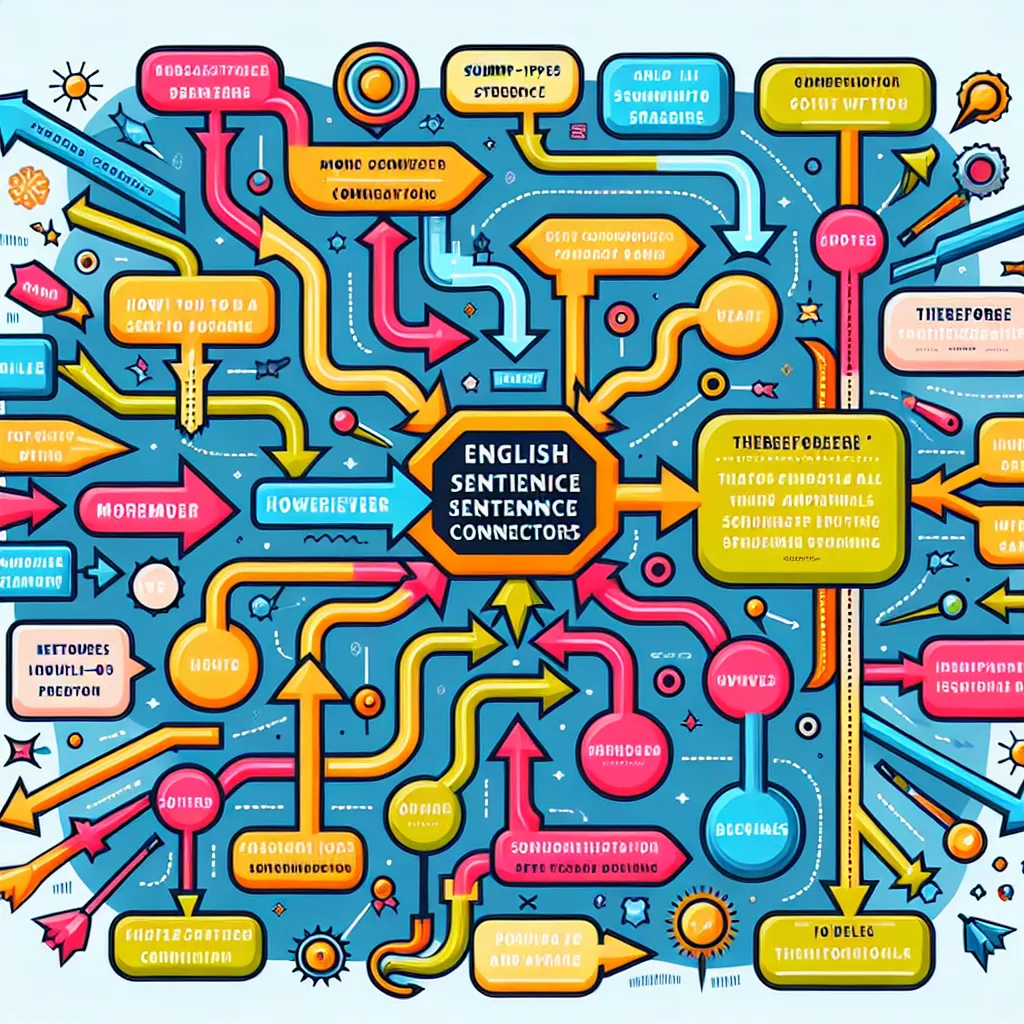Are you struggling to make your English writing flow smoothly? Do you find it challenging to link your ideas coherently when speaking? Mastering English sentence connectors is the key to overcoming these hurdles. This comprehensive guide will provide you with effective strategies to enhance your use of connectors, helping you to express yourself more fluently and professionally in English.
 English Sentence Connectors
English Sentence Connectors
Understanding the Importance of Sentence Connectors
Sentence connectors, also known as linking words or transitional phrases, are essential elements in English language proficiency. They serve as bridges between ideas, helping to create a logical flow in both written and spoken English. By mastering these connectors, you can:
- Improve the coherence of your writing
- Enhance the clarity of your speech
- Express complex ideas more effectively
- Achieve higher scores in English proficiency exams like IELTS and TOEFL
Types of Sentence Connectors
Before diving into strategies, it’s crucial to understand the various types of connectors:
- Addition: moreover, furthermore, in addition
- Contrast: however, nevertheless, on the other hand
- Cause and Effect: therefore, consequently, as a result
- Sequence: firstly, secondly, finally
- Example: for instance, such as, for example
- Time: meanwhile, subsequently, thereafter
Strategies for Mastering English Sentence Connectors
1. Build a Comprehensive Connector Vocabulary
One of the most effective strategies is to expand your repertoire of connectors. Here’s how:
- Create a personal connector dictionary
- Group connectors by their function (e.g., all contrast connectors together)
- Learn synonyms for common connectors to add variety to your language
For example, instead of always using “but” for contrast, learn to use “however,” “nevertheless,” or “on the contrary.”
2. Practice with Contextual Exercises
Merely memorizing connectors isn’t enough; you need to understand how to use them in context. Try these exercises:
- Fill-in-the-blank activities with connectors
- Sentence combining exercises
- Paragraph restructuring tasks
For instance, take two simple sentences and combine them using an appropriate connector:
“I love coffee. I don’t drink it often.”
Could become: “Although I love coffee, I don’t drink it often.”
3. Analyze Authentic Materials
Exposure to real-world English usage is crucial. Implement these practices:
- Read diverse English texts (newspapers, academic journals, novels)
- Watch English movies and TV shows with subtitles
- Listen to podcasts and pay attention to connector usage
As you engage with these materials, note how connectors are used naturally in different contexts.
4. Use Connector Maps for Writing
Visual aids can significantly improve your understanding and application of connectors. Create connector maps for different writing purposes:
- Argumentative essays: focus on contrast and cause-effect connectors
- Descriptive writing: emphasize sequence and example connectors
- Narrative pieces: highlight time-related connectors
5. Incorporate Connectors in Speaking Exercises
Don’t neglect the spoken aspect of language. Enhance your verbal skills with these techniques:
- Practice using connectors in daily conversations
- Participate in English discussion groups or debate clubs
- Record yourself speaking and analyze your use of connectors
For example, when explaining your weekend plans, consciously use sequence connectors: “First, I’ll go grocery shopping. Then, I’ll meet friends for lunch. Finally, I’ll finish my assignment.”
 English Speaking Practice
English Speaking Practice
6. Utilize Technology for Learning
Leverage digital tools to reinforce your learning:
- Use language learning apps with connector-focused exercises
- Follow English grammar accounts on social media for daily tips
- Employ writing assistance tools to check your connector usage
Apps like Grammarly or Hemingway Editor can provide instant feedback on your writing, including suggestions for more appropriate connectors.
7. Create Connector Chains
Challenge yourself to use multiple connectors in a single paragraph or speech. This exercise helps you understand how different connectors work together:
“Firstly, I woke up early. Then, I went for a run. However, it started raining. Consequently, I had to cut my run short. Nevertheless, I felt energized for the rest of the day.”
Common Pitfalls to Avoid
As you work on mastering English sentence connectors, be aware of these common mistakes:
- Overusing connectors: While connectors are important, using too many can make your writing or speech sound unnatural.
- Misusing formal and informal connectors: Some connectors are more suitable for academic writing, while others are better for casual conversation.
- Neglecting punctuation: Proper punctuation with connectors is crucial for clarity.
- Ignoring context: Different types of writing require different connectors. An academic essay will use different connectors than a friendly email.
Next Steps in Your Learning Journey
Mastering English sentence connectors is an ongoing process. Here are some next steps to continue improving:
- Set specific goals for incorporating new connectors into your daily English use.
- Join an English writing workshop or speaking club to practice in a supportive environment.
- Start a blog or vlog in English, focusing on smooth transitions between ideas.
- Take an advanced English course that emphasizes cohesion and coherence in communication.
Remember, consistent practice and exposure are key to mastering any language skill, including the use of sentence connectors.
In conclusion, mastering English sentence connectors is a vital step towards achieving fluency and sophistication in your English communication. By implementing these strategies and being mindful of common pitfalls, you’ll see significant improvements in your ability to express ideas clearly and coherently. Keep practicing, stay curious, and don’t hesitate to experiment with different connectors in various contexts. Your journey to mastering English sentence connectors is an exciting path to more effective and impressive English communication.




